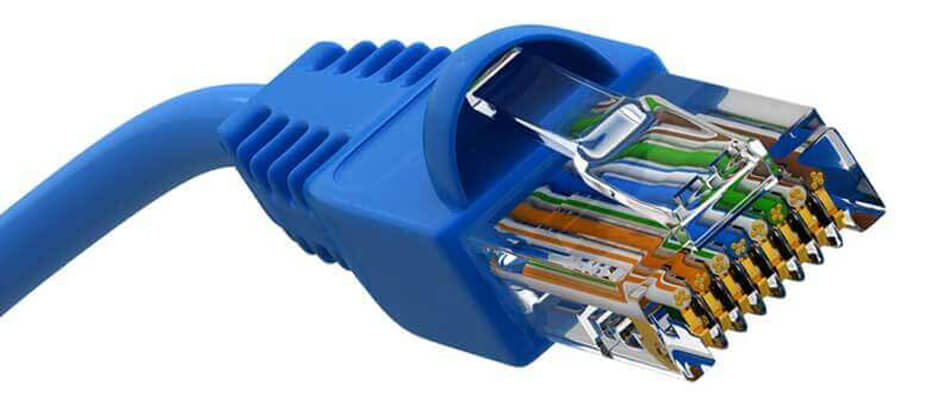Category 6 is an Ethernet cable standard defined by the Electronic Industries Association and Telecommunications Industry Association. Cat 6 is the sixth generation of twisted pair Ethernet cabling that is used in home and business networks. Cat 6 cabling is backward compatible with the Cat 5 and Cat 5e standards that preceded it.
How CAT 6 Cable Works
Category 6 cables support Gigabit Ethernet data rates of 1 gigabit per second. These cables can accommodate 10 Gigabit Ethernet connections over a limited distance—commonly about 180 feet for a single cable. Cat 6 cable contains four pairs of copper wire and uses all the pairs for signaling to obtain its high level of performance.
Other basic facts about Cat 6 cables include:
- The ends of a Cat 6 cable use the same RJ-45 standard connector as previous generations of Ethernet cables.
- The cable is identified as Cat 6 by printed text along the insulation sheath.
- An enhanced version of Cat 6, called Cat 6a, supports up to 10 Gbps speeds at greater distances.
Cat 6 vs. Cat 6a
The Category 6 Augmented cable standard, or Cat 6a, was created to further improve the performance of Cat 6 Ethernet cables. Using Cat 6a enables 10 Gigabit Ethernet data rates over a single cable run up to 328 feet. Cat 6 supports 10 Gigabit Ethernet only up to 164 feet of cable length. With the higher performance, Cat 6a cables generally cost more than Cat 6 and are slightly thicker. Cat 6a still uses the standard RJ-45 connectors.
What is an Ethernet Cable?
Cat 6 vs. Cat 5e
The history of cable design for Ethernet networks resulted in two separate efforts to improve on the previous generation Category 5 cable standard. One eventually became Cat 6. The other, called Category 5 Enhanced, was standardized earlier.
Cat 5e lacks some of the technical improvements that went into Cat 6, but it supports Gigabit Ethernet installations at a lower cost. Like Cat 6, Cat 5e uses a four wire-pair signaling scheme to achieve its data throughput rates. In contrast, Cat 5 cables contain four wire-pairs but only use two of the pairs.
Because it became available on the market sooner and offered acceptable performance for Gigabit Ethernet at a more affordable price point, Cat 5e became a popular choice for wired Ethernet installations. This value proposition, along with the relatively slow transition of the industry to 10 Gigabit Ethernet, significantly slowed the adoption of Cat 6.
Cat 6 costs more than Cat 5e, so many buyers choose Cat 5e over Cat 6. Eventually, as 10 Gigabit Ethernet speeds become more widely available, people may need to upgrade to Cat 6 or Cat 6a to take full advantage of these higher speeds.
Limitations of Cat 6
As with all other types of twisted pair EIA/TIA cabling, individual Cat 6 cable runs are limited to a maximum recommended length of 328 feet for nominal connection speeds. Cat 6 cabling supports 10 Gigabit Ethernet connections, but not at this full distance.
Article Provided By: Life Wire
![]()
If you would like liquidvideotechnologies.com to discuss developing your Home Security System, Networking, Access Control, Fire, IT consultant, or PCI Compliance, please do not hesitate to call us at 864-859-9848 or you can email us at deveren@liquidvideotechnologies.com.


Recent Comments